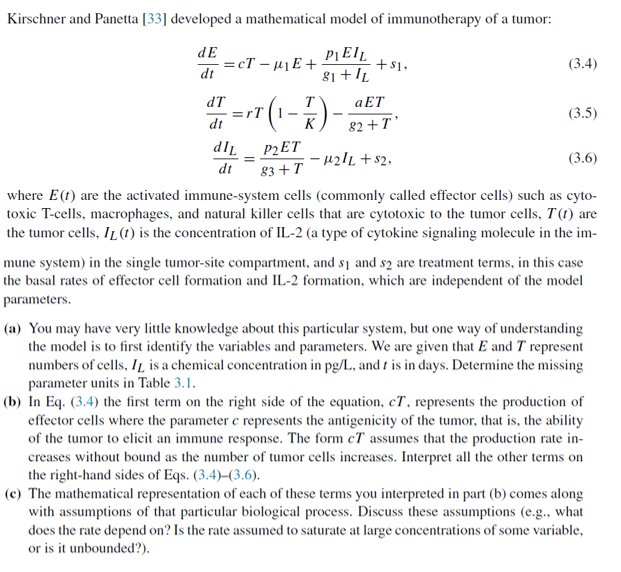Answered step by step
Verified Expert Solution
Question
1 Approved Answer
Kirschner and Panetta [33] developed a mathematical model of immunotherapy of a tumor: dtdE=cT1E+g1+ILp1EIL+s1,dtdT=rT(1KT)g2+TaET,dtdIL=g3+Tp2ET2IL+s2, where E(t) are the activated immune-system cells (commonly called effector cells)


Step by Step Solution
There are 3 Steps involved in it
Step: 1

Get Instant Access to Expert-Tailored Solutions
See step-by-step solutions with expert insights and AI powered tools for academic success
Step: 2

Step: 3

Ace Your Homework with AI
Get the answers you need in no time with our AI-driven, step-by-step assistance
Get Started


